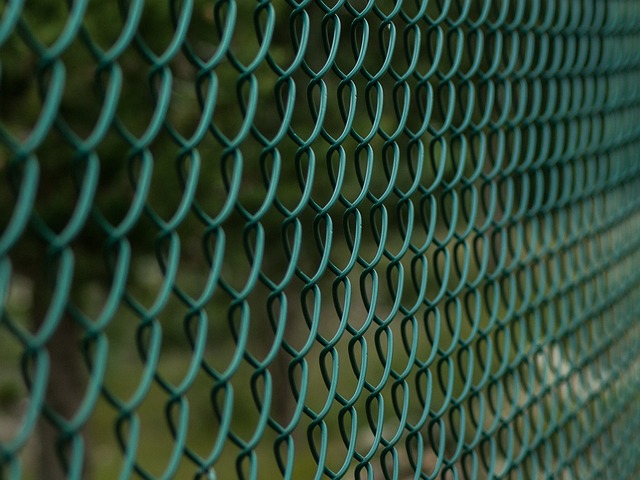Fencing is not just about defining your outdoor space; it’s an investment in curb appeal and property value. To ensure your wooden fence makes a lasting impression, consider the art of fence staining and sealing. This comprehensive guide delves into the essentials of enhancing your fence’s aesthetics and durability. From understanding the benefits of staining to choosing the perfect color and applying a protective seal, we’ll equip you with knowledge to transform your wooden fence into a stunning focal point.
- Understanding Fence Staining: Benefits and Types
- Preparing Your Wooden Fence for Staining
- Choosing the Right Stain: Color Options & Application
- Sealing for Protection: The Importance and Process
- Maintenance Tips for Long-Lasting Fence Beauty
Understanding Fence Staining: Benefits and Types
Fence staining is a popular choice for homeowners looking to enhance the appearance and protect their wooden fences. It involves applying a pigmented sealer or paint to the fence’s surface, offering a range of benefits beyond simple aesthetics. Staining creates a protective barrier against the elements, including UV rays, rain, and snow, which can fade and damage untreated wood over time. By blocking these elements, stained fences remain vibrant and retain their structural integrity for longer periods.
Several types of fence staining are available in the market, each with unique characteristics. Water-based stains are popular due to their low odor and quick drying time. They provide a subtle color enhancement while still allowing some natural wood grain to show through. On the other hand, oil-based stains offer deeper, more vibrant colors but take longer to dry. These stains are known for their durability and resistance to fading, making them ideal for high-traffic areas or where exposure to harsh weather conditions is expected.
Preparing Your Wooden Fence for Staining
Before applying any stain or sealant to your wooden fence, proper preparation is key. Start by cleaning the fence thoroughly using a pressure washer or a stiff-bristled brush to remove dirt, dust, and debris. This step ensures that the stain adheres evenly and effectively. After cleaning, inspect the wood for any signs of damage, rot, or excessive moisture. Repair or replace any damaged sections to prevent further issues.
Next, sand the fence’s surface gently to create a rough texture, which will help the stain penetrate deeper into the wood fibers. Use a fine-grit sandpaper and take care not to sand away too much material. Lastly, wipe down the fence with a damp cloth to get rid of any dust particles left from sanding, ensuring a clean surface for staining.
Choosing the Right Stain: Color Options & Application
When it comes to enhancing your wooden fence, selecting the perfect stain is a crucial step. The market offers an array of options in terms of color, each catering to different preferences and outdoor environments. From rich, deep browns to vibrant red-hued stains, there’s a hue for every taste. Consider the ambiance you wish to create; a lighter shade can open up a space, while darker tones add drama and depth.
Application methods also vary, typically involving brush, roller, or spray techniques. For a more even finish, spraying is ideal, but it requires proper ventilation. Brushing offers better control for intricate designs or corners, while rolling is efficient for large, flat surfaces. Choosing the right stain and application method will ensure your fence not only looks its best but also stands the test of time, protecting the wood beneath.
Sealing for Protection: The Importance and Process
Sealing is an essential step in fence staining and maintenance, offering protection against the elements and prolonging the lifespan of your wooden fence. It acts as a barrier, shielding the wood from damaging UV rays, harsh weather conditions, and moisture. Without sealing, wood can become vulnerable to fading, cracking, splitting, and even rotting over time.
The process involves applying a protective coat of sealant to the stained fence. This can be done using a brush, roller, or sprayer, ensuring even coverage. There are various types of sealants available, each with unique properties and benefits. Water-based sealants are popular due to their low odor and quick drying time. Oil-based options provide deeper penetration and superior durability but may emit stronger fumes. After application, the sealant needs to dry completely, often taking several hours or as directed by the manufacturer. Regular sealing, typically every one to three years, will keep your fence looking its best and ensure long-lasting performance.
Maintenance Tips for Long-Lasting Fence Beauty
Regular maintenance is key to keeping your wooden fence looking its best and extending its lifespan. After staining, it’s important to establish a sealing routine to protect the finish from UV exposure, moisture, and fading. Water-based or solvent-based sealers are popular choices; apply them every one to two years, depending on your climate and the type of sealer used.
In between sealings, clean your fence regularly to remove dirt, mildew, and mold buildup. Use a soft brush or sponge with mild detergent and water for routine cleaning. For tougher stains, opt for a pressure washer or commercial cleaner, but be mindful not to over-clean or damage the wood’s finish. Additionally, inspect your fence for any signs of rot, cracks, or damaged boards, repairing or replacing them promptly to prevent further deterioration.
